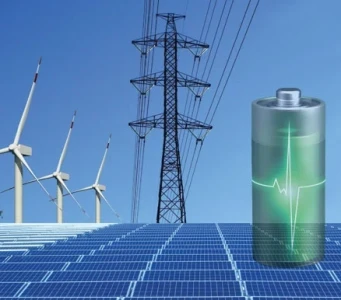The Rise of the First National Green Bank in the U.S.

The recent launch of the Coalition for Green Capital's (CGC) first national green bank marks a significant milestone in the United States' climate strategy. This development, announced in a Utility Dive article, underscores a pivotal shift towards streamlined, scalable financing for green initiatives across the country. With the implementation of the Inflation Reduction Act (IRA), the green bank aims to leverage federal funds to spur private investment in climate-friendly projects, offering a robust mechanism to accelerate the transition to a low-carbon economy.
The Vision Behind the Green Bank
The concept of a green bank is not new. Green banks are institutions designed to use public funds to attract private capital into the green sector, supporting projects that might otherwise struggle to secure financing. However, the new national green bank, under the auspices of the Coalition for Green Capital, represents a quantum leap in this approach. It is poised to be a game-changer in how the U.S. tackles climate change, with a mandate to channel resources into a diverse range of sustainable projects.
The CGC's national green bank will be a centralized entity with a mission to provide funding solutions and expertise to accelerate the adoption of clean technologies. By tapping into the $369 billion allocated for climate initiatives through the IRA, this green bank is set to become a key player in financing renewable energy, energy efficiency, and other climate-related projects on a scale previously unattainable.
Impact of the Inflation Reduction Act (IRA)
The IRA, signed into law in 2022, is a landmark piece of legislation aimed at combating climate change through substantial investments in clean energy and infrastructure. It provides significant tax incentives and grants to stimulate the development and deployment of green technologies. The creation of the national green bank is a direct outcome of this legislative push, designed to maximize the impact of IRA funds and ensure that they are effectively channeled into projects that drive real change.
The green bank will utilize these funds to mitigate the risks associated with green investments. By offering credit enhancements, guarantees, and other financial tools, it will make it easier for private investors to commit capital to green projects. This approach not only helps bridge the financing gap for innovative but risky green technologies but also amplifies the overall impact of the IRA’s climate spending.
Goals and Expectations
The national green bank aims to achieve several key objectives:
-
Scaling Up Investment: By providing a structured, national framework for green financing, the bank will facilitate larger and more numerous investments in climate solutions. This scale is critical for achieving the rapid transition required to meet national and global climate targets.
-
Promoting Equity and Inclusion: The bank is also expected to focus on ensuring that green financing benefits underserved and marginalized communities. By supporting projects that improve energy access and create green jobs in these areas, the bank will help drive equitable economic growth alongside environmental benefits.
-
Driving Innovation: By providing capital to emerging green technologies and businesses, the bank will foster innovation. This includes not only established renewable energy sources but also next-generation technologies like advanced batteries and carbon capture solutions.
-
Building Partnerships: Collaboration with state and local green banks, as well as private sector stakeholders, will be crucial. The national green bank’s success will depend on its ability to leverage a broad network of partners to extend its reach and effectiveness.
Challenges and Considerations
Despite its promising outlook, the national green bank will face several challenges. The initial phase will involve setting up operational structures, establishing credibility, and building relationships with potential investors and project developers. Additionally, ensuring that the green bank's initiatives align with broader federal and state climate goals will require careful coordination.
Moreover, the bank will need to navigate the complexities of varying state regulations and market conditions. Effective implementation will require a nuanced understanding of regional needs and opportunities, as well as strategies to address barriers to investment in different locales.
Conclusion
The establishment of the national green bank represents a transformative step in U.S. climate policy, providing a powerful tool for mobilizing private investment in green projects. By leveraging IRA funds and focusing on equitable and innovative financing solutions, the green bank is set to play a pivotal role in accelerating the country’s transition to a sustainable future. As this new institution embarks on its mission, it will be crucial to monitor its progress and impact, ensuring that it meets its ambitious goals and contributes meaningfully to addressing the climate crisis.









